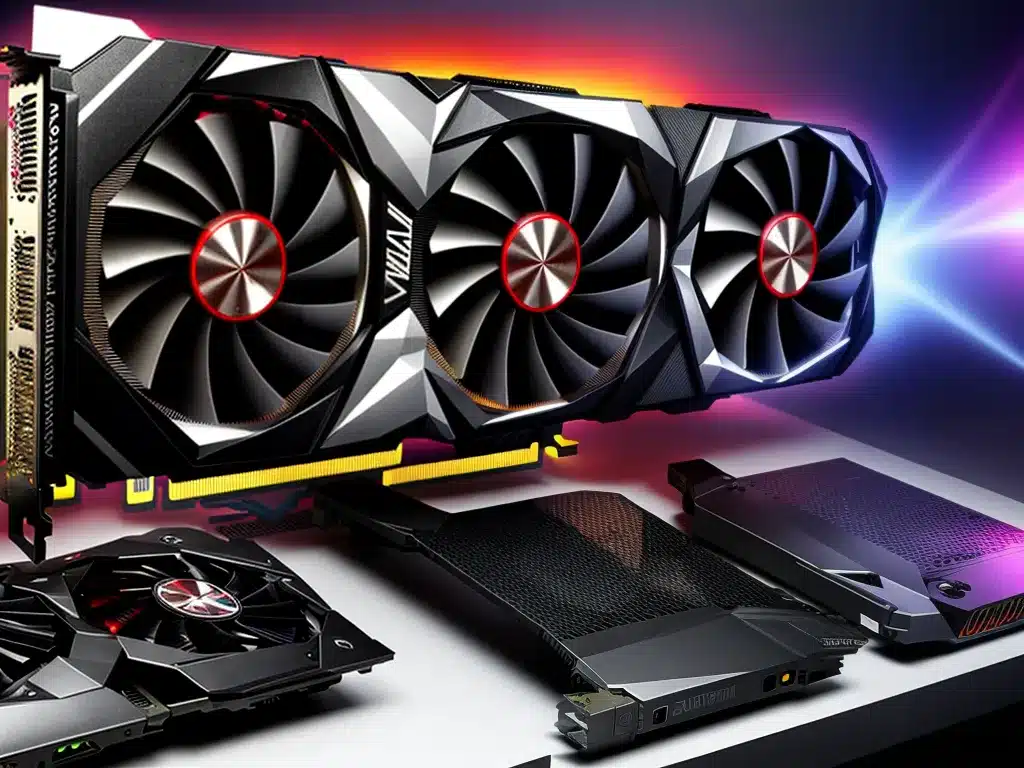
Introduction to SLI
Scalable Link Interface (SLI) was a multi-GPU technology developed by Nvidia that allowed users to link two or more Nvidia GPUs together to improve graphics performance. First introduced in 2004, SLI allowed GPUs to share the workload, enabling higher frame rates and resolution in games and applications.
SLI worked by splitting the rendering work between GPUs – each GPU rendered alternate frames. This alternate frame rendering reduced the workload on each GPU while allowing them to work in parallel. The frames rendered by each GPU were then sent to a master GPU that handled compositing the final image to be displayed.
The Rise of SLI
In the early and mid-2000s, SLI gained significant popularity among enthusiasts and gamers looking to boost performance. Here are some of the factors that contributed to the rise of multi-GPU SLI setups:
Demand for Higher Graphics Performance
-
Games and 3D applications were becoming more graphically intensive, creating demand for better GPU performance. A single GPU was often not enough to maximise settings and frame rates.
-
SLI allowed users to link two or more identical GPUs to deliver nearly scaled linear performance improvements. For example, two SLI GTX 680s could deliver almost double the performance of a single GTX 680.
Competition with AMD CrossFire
- SLI technology competed with AMD’s multi-GPU solution, CrossFire. Nvidia and AMD would battle for dual and triple GPU supremacy, further improving SLI support and features.
Enthusiast Market and GPU Scaling
-
SLI appealed heavily to the PC gaming enthusiast market, who wanted the best graphics and were willing to pay for multi-GPU setups.
-
GPU manufacturing advances allowed for more stream processors and performance to scale across two or three GPUs. This maximised SLI potential.
Why SLI Declined
While SLI enjoyed a good run of popularity, it faced some fundamental issues that led to its decline, including:
Inconsistent Scaling and Support
-
SLI scaling was very inconsistent across different games and applications. Some titles did not support SLI at all, while others only delivered a minimal performance uplift compared to a single powerful GPU.
-
There were microstuttering and frame pacing issues in some SLI setups, hurting the gaming experience.
Bandwidth Limitations
- Higher multi-GPU counts increased the burden on the PCIe lane bandwidth. Bandwidth became a bottleneck, limiting the scalability of SLI beyond two or three GPUs.
Heat and Power Consumption
- Having two or more high-end GPUs increased heat output and power draw substantially. This made cooling and power delivery more complex.
Cost and Complexity
-
Multi-GPU setups were expensive, requiring users to buy two or more identical high-end GPUs. This pricing put it out of reach for many gamers.
-
Complexity increased for stuff like drivers, profiles, and getting apps to leverage both GPUs optimally. This made the user experience frustrating at times.
Alternatives Emerging
-
As single GPU power increased enormously, the need to go multi-GPU diminished for many users.
-
Alternative technologies like ray tracing also emerged, where multi-GPU offered little benefit.
The Death of SLI
By 2018 it was clear that SLI was dying a slow death. Nvidia finally removed SLI support starting with their RTX 3000 series in 2020. Here’s a quick rundown of the events that led to SLI’s demise:
-
2015 – Less native SLI profiles supported in games, performance benefit decreases.
-
2016 – Nvidia cancels 3 and 4-way SLI support, limits SLI to dual GPU.
-
2018 – Only 10% of gamers still use SLI, single GPU performance supersedes multi-GPU needs for most.
-
2019 – Nvidia disables SLI support for new GeForce RTX GPUs by default. Requires manual enabling by users.
-
2020 – Nvidia GeForce RTX 3000 series officially drops support for even dual SLI setups. SLI is finally dead after a 16 year run.
While SLI is now defunct, it enjoyed a good run and helped drive innovation in multi-GPU technologies. The spirit of SLI lives on with new mechanisms like AMD CrossFireX and Intel Xe Link emerging to leverage multiple GPUs. But the complexity and inconsistent scaling of multi-GPU for gaming workloads ultimately led to the downfall and discontinuation of SLI.
The Future – Multi-die GPUs
With tight silicon integration and packaging methods like:
- AMD Infinity Fabric on their GPUs
- Intel EMIB and Foveros
- Nvidia NVLink
There is potential for the return of “SLI-like” multi-GPU performance scaling in the future via multi-die GPU packages. Rather than linking discrete graphics cards over PCIe, the idea is to have multiple GPU dies in the same package interconnected with advanced silicon bridges and packaging. This provides the performance benefits of multiple GPUs without the historical downsides of multi-card SLI.
As manufacturing processes allow for more advanced integration, we could see high-end GPUs composed of multiple dies networked together seamlessly via interconnects like Nvidia NVLink or Intel’s advanced packaging technologies. The multi-die approach improves scaling, reduces latency, and solves many of the issues that plagued old multi-card SLI, potentially resurrecting the multi-GPU dream. But for now, true multi-GPU SLI remains dead with no sign of return.












